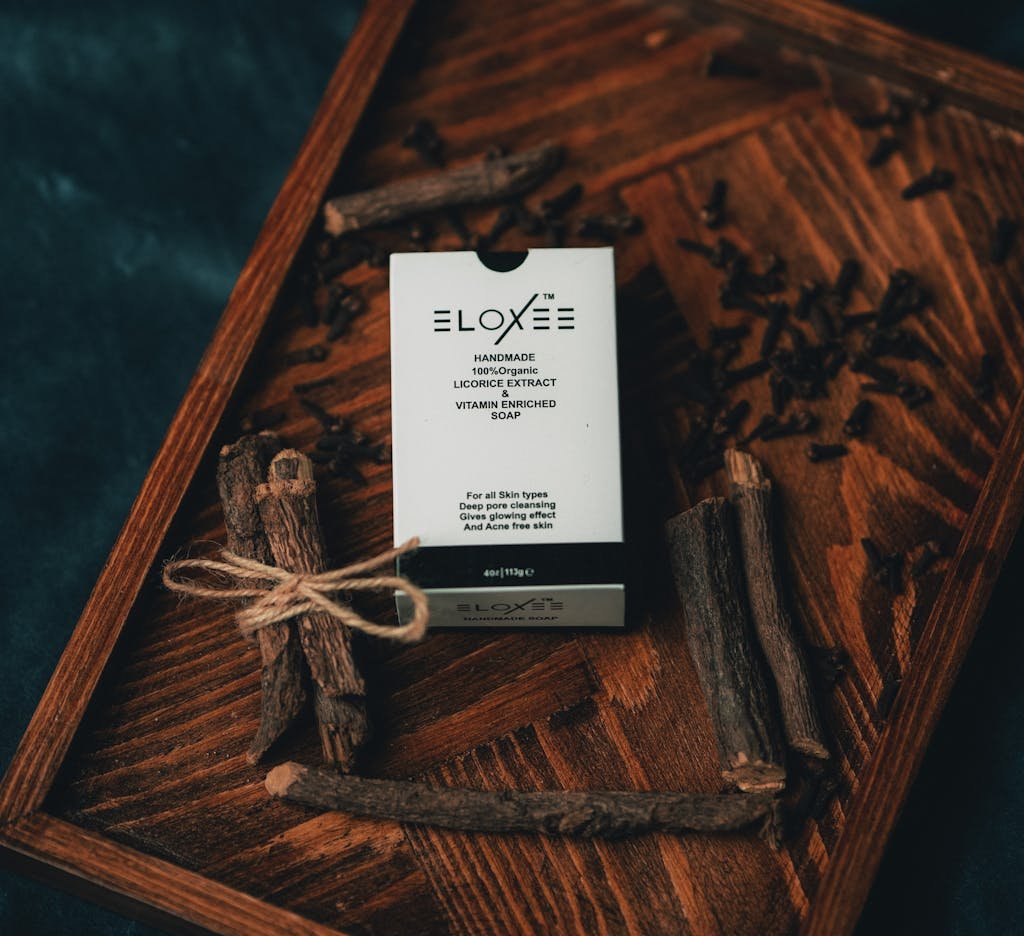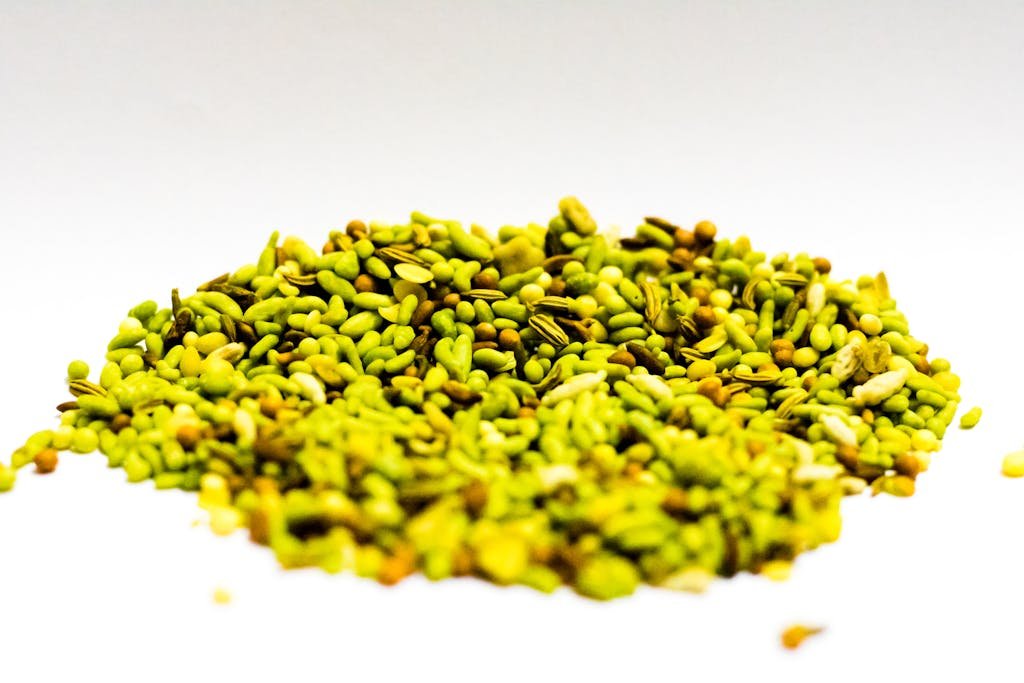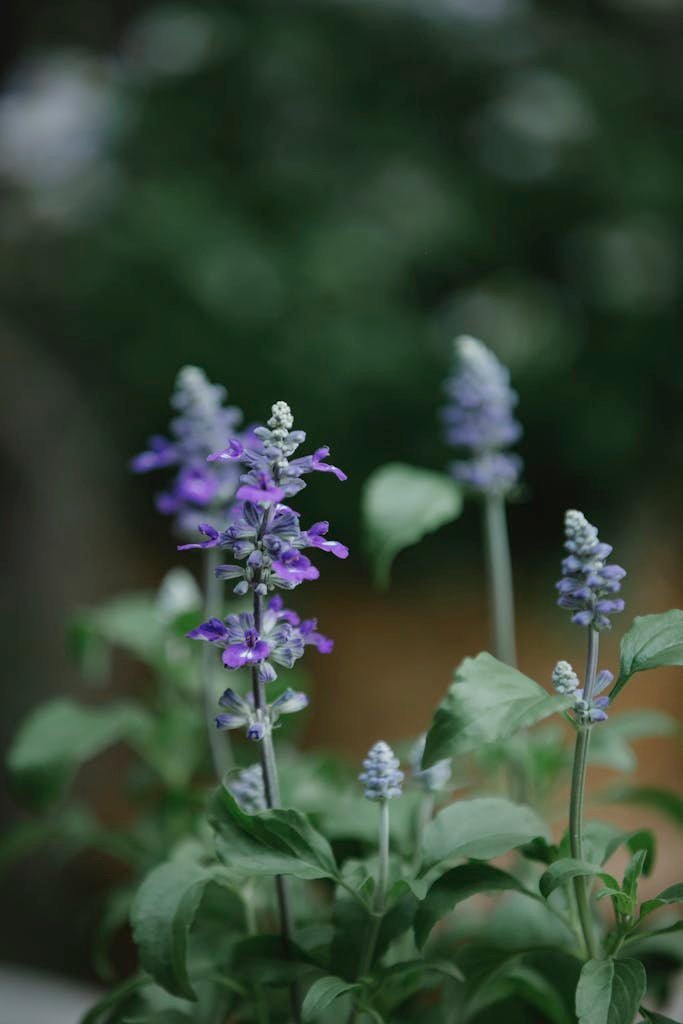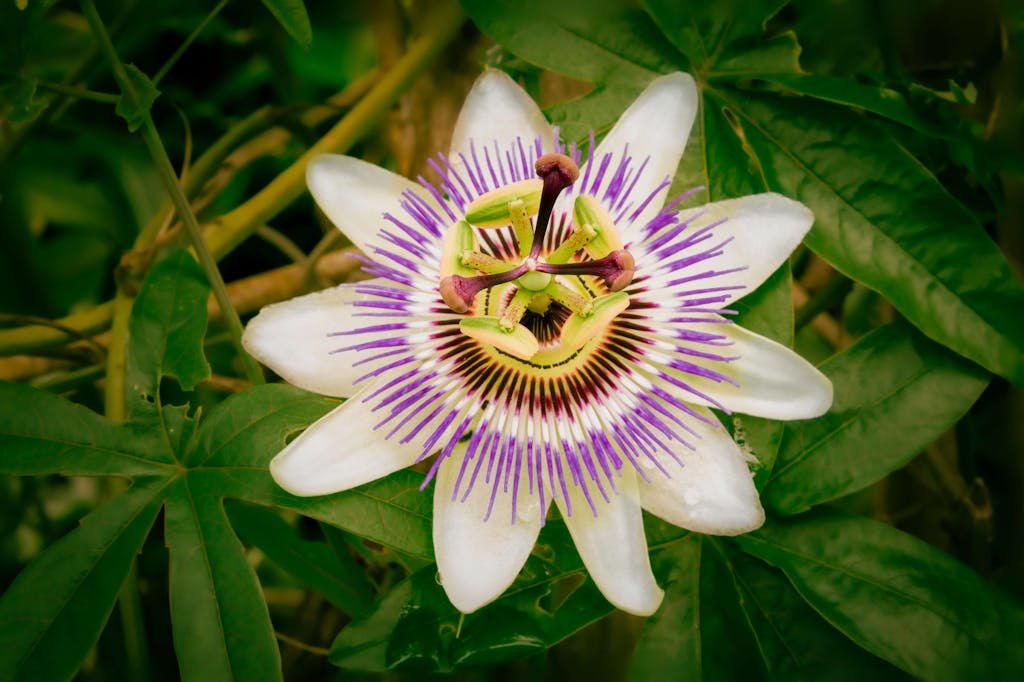Licorice (Glycyrrhiza glabra)
Licorice Glycyrrhiza glabra, commonly known as licorice, isn’t just a candy flavor—it’s a plant with a rich history and a plethora of health benefits. Native to parts of Asia and Europe, this herb has been used for centuries in traditional medicine, cherished for its sweet root that’s packed with medicinal properties.
Today, licorice continues to be a subject of interest among health enthusiasts and researchers alike. Its potential to soothe gastrointestinal problems, relieve respiratory issues, and even its implications in skincare, make it a versatile natural remedy. Let’s dive into the world of licorice, exploring its uses, benefits, and why it remains a staple in herbal medicine cabinets around the globe.
Key Takeaways
- Licorice (Glycyrrhiza glabra) is valued both for its medicinal properties and its sweet flavor, stemming primarily from the compound glycyrrhizin which offers anti-inflammatory and antimicrobial benefits.
- The herb is beneficial in treating various health issues, including gastrointestinal problems, respiratory conditions, and contributing to skin health through its anti-inflammatory, antimicrobial, and adaptogenic properties.
- Licorice’s role in traditional medicine spans continents and centuries, with significant historical use in Traditional Chinese Medicine, Ayurveda, and ancient Egyptian health practices, highlighting its enduring therapeutic appeal.
- Modern research supports licorice’s traditional uses, particularly for gastrointestinal wellness, respiratory health, and stress reduction, alongside its scientific backing for skincare efficacy, especially in addressing conditions like eczema, psoriasis, and hyperpigmentation.
- While licorice has numerous health benefits, it’s crucial to consume it in moderation due to the potential adverse effects of excessive glycyrrhizin intake, emphasizing the importance of consultation with health professionals before adding it to your regimen.
- Licorice’s inclusion in skincare products is bolstered by its components like glabridin and liquiritin, which help in lightening and evening out skin tone, showcasing its versatile application beyond culinary and medicinal uses.
What is Licorice Glycyrrhiza glabra?
Licorice Glycyrrhiza glabra, commonly known as licorice, is a perennial herb native to parts of Europe and Asia. It’s well-regarded in the realm of traditional medicine for its extensive health benefits. Recognized by its woody roots and sweet-tasting stems, licorice plays a pivotal role in both culinary and medicinal contexts.
The plant’s roots contain a potent compound called glycyrrhizin, which is responsible for its sweetness and therapeutic properties. Research indicates that glycyrrhizin harbors anti-inflammatory and antimicrobial effects, making licorice a valuable ally in combating various ailments. Studies published in respected journals such as Phytomedicine and The Journal of Clinical Endocrinology & Metabolism elucidate licorice’s potential in soothing gastrointestinal issues, enhancing respiratory health, and even supporting skin health.
Licorice’s benefits don’t stop at its physical health implications. The herb is also explored for its role in stress reduction due to its adaptogenic properties, helping the body manage stress more efficiently. This aspect of licorice could be particularly beneficial in today’s fast-paced world, where stress and anxiety levels are at an all-time high.
The cultivation and collection of Licorice Glycyrrhiza glabra demand specific climatic conditions, thriving best in well-drained soils under full sun. Its harvesting and processing are meticulous tasks, ensuring that the valuable compounds within its roots are preserved.
| Component | Benefit |
|---|---|
| Glycyrrhizin | Anti-inflammatory, Antimicrobial |
| Flavonoids | Antioxidant properties |
| Coumarins | Supports skin health |
Licorice’s versatility extends beyond its medicinal use. It’s a staple in various cuisines, adding a distinct flavor to sweets, beverages, and even savory dishes. The plant’s adaptability in various products underscores its enduring appeal.
While licorice Glycyrrhiza glabra boasts numerous benefits, it’s crucial for consumers to be mindful of its consumption. Due to glycyrrhizin’s potent effects, excessive intake can lead to adverse health effects. Health professionals recommend moderation and consultation before incorporating licorice into one’s dietary regimen, especially for those with existing health conditions.
The History of Licorice
Licorice, scientifically known as Glycyrrhiza glabra, has a rich history spanning thousands of years, showcasing its importance in various cultures around the world. Originating in Europe and Asia, it’s been utilized not just as a sweet treat but also for its medicinal properties.
Historically, licorice has been documented in ancient manuscripts from different civilizations. The ancient Egyptians prized licorice for its natural sweetness and purported healing abilities. Evidence suggests that licorice was found in the tomb of King Tutankhamen, indicating its value in ancient Egyptian society. Meanwhile, in ancient China, licorice was considered a vital herb in Traditional Chinese Medicine (TCM). It was believed to harmonize the ingredients in herbal formulas.
Throughout the Middle Ages in Europe, licorice was commonly used for its health benefits. It was utilized to relieve various ailments, from coughs and colds to stomach issues. The herb found its way into the annals of history, being mentioned in the writings of Theophrastus and Dioscorides, who discussed its therapeutic uses.
In more recent times, licorice has been the subject of various scientific studies. Researchers are examining its potential in treating conditions such as peptic ulcers, liver ailments, and respiratory issues. These studies underscore licorice’s enduring appeal and its transition from ancient remedy to modern-day therapeutic agent.
The longevity of licorice’s use highlights its significance across different periods and cultures. Its journey from ancient tombs to contemporary laboratories illuminates the enduring belief in its beneficial properties. As science continues to explore the depths of licorice’s potential, its historical roots serve as a testament to the herb’s lasting impact on human health and culture.
Health Benefits of Licorice
Licorice, or Glycyrrhiza glabra, is an herb celebrated not only for its unique flavor but also for its wide array of health benefits. One of the key components of licorice root is glycyrrhizin, which has been shown to have potent anti-inflammatory and antimicrobial properties. This compound contributes significantly to the herb’s therapeutic potential, offering relief in various conditions ranging from gastrointestinal issues to respiratory disorders.
Soothing Gastrointestinal Issues
Licorice root is widely recognized for its beneficial effects on gastrointestinal health. It soothes the stomach lining, aids in the repair of stomach ulcers, and promotes overall digestive well-being. Research indicates that glycyrrhizin helps in reducing inflammation in the stomach, offering a natural remedy for conditions like gastritis and acid reflux.
| Condition | Benefit |
|---|---|
| Gastritis | Reduces inflammation |
| Acid Reflux | Soothes stomach lining |
Enhancing Respiratory Health
The anti-inflammatory properties of licorice also extend to respiratory health. Licorice has been used traditionally to ease coughs, treat bronchitis, and alleviate symptoms of other respiratory conditions. By acting as an expectorant, it helps in the clearance of mucus from the lungs, thus facilitating easier breathing.
Supporting Skin Health
Licorice’s antimicrobial and anti-inflammatory effects make it a valuable ally in skin care. It has been found effective in treating eczema, acne, and psoriasis, reducing redness, and promoting healing. The herb’s compounds, such as licochalcone, work to control oil production and soothe irritation, making licorice a natural choice for maintaining skin health.
Reducing Stress
Adaptogens are substances that aid the body in responding to stress, and licorice is known to possess adaptogenic properties. It helps in regulating cortisol levels, thereby reducing stress and promoting a sense of well-being. This adaptogenic role further demonstrates licorice’s holistic impact on health, supporting not only physical but also mental well-being.
Licorice in Traditional Medicine
Licorice, or Glycyrrhiza glabra, has been a cornerstone in traditional medicine across the globe, revered for its wide array of therapeutic benefits. Cultures from ancient China to Egypt and Greece have utilized licorice root for centuries, not only as a sweetener but also as a vital medicinal herb. Its enduring popularity in traditional medicinal systems lies in its impressive properties and the range of health issues it addresses.
In Traditional Chinese Medicine (TCM), licorice is known as “gancao,” translating to “sweet grass.” TCM practitioners have long prescribed licorice root to enhance the effects of other herbs, harmonize the body’s energies, and relieve various ailments. It’s particularly valued for its ability to treat conditions such as coughs, colds, gastrointestinal issues, and fatigue. This herb’s adaptogenic properties help in balancing vital energies in the body, contributing to its staple inclusion in many TCM herbal formulas.
Similarly, in Ayurveda, the ancient Indian system of medicine, licorice is known as “Yashtimadhu.” It’s cherished for its soothing, cooling, and rejuvenating properties. Ayurvedic texts suggest licorice can help in healing ulcers, improving skin conditions, and enhancing respiratory and digestive health. The herb is seen as a powerful tool in purifying the blood and strengthening the body’s tissues.
Research supports the traditional uses of licorice, particularly its effects on gastrointestinal and respiratory health. Studies have noted glycyrrhizin’s role, a key compound in licorice, in exhibiting anti-inflammatory and antimicrobial activities that contribute to its therapeutic potential.
| Benefit | Key Compound | Notes |
|---|---|---|
| Gastrointestinal Health | Glycyrrhizin | Helps soothe the stomach lining and repair ulcers |
| Respiratory Health | Flavonoids | Aids in relieving coughs and colds |
| Adaptogenic Effects | Various Phytochemicals | Helps regulate cortisol levels and reduce stress |
Through the lens of both traditional knowledge and modern research, it’s evident that licorice has played a significant role in natural healing practices. Its application in traditional medicine underscores the herb’s versatility and effectiveness in dealing with a range of health issues, paving the way for further scientific exploration into its potential benefits.
Licorice in Skincare
Licorice, scientifically known as Glycyrrhiza glabra, is not just a treat for the taste buds but also a gift to skincare. Enriched with potent compounds such as glabridin and liquiritin, licorice extract has made its mark in the skincare industry owing to its impressive anti-inflammatory, antimicrobial, and skin-brightening properties.
The Soothing Effect of Licorice
The root of licorice is rich in glycyrrhizin, which imparts a remarkable soothing effect on the skin. It’s known for its capacity to reduce redness, irritation, and the effects of disorders like eczema and psoriasis. Those with sensitive skin find licorice-derived products particularly beneficial, as they gently nurture the skin, minimizing discomfort and promoting a healthier appearance.
Skin Brightening and Evening
One of licorice’s standout qualities in skincare is its ability to brighten and even out skin tone. Glabridin, a potent compound present in licorice, inhibits the enzyme that causes skin to darken in response to sun exposure. This natural lightening effect makes licorice an invaluable ingredient in the formulation of products targeting hyperpigmentation, dark spots, and under-eye circles.
Scientific Backing
Research supports the efficacy of licorice in skincare. A study published in the Journal of Investigative Dermatology highlighted glabridin’s ability to protect the skin against UV-B-induced pigmentation, offering a natural alternative to chemical skin lighteners. Additionally, liquiritin has been shown to improve the appearance of melasma, as evidenced in research published in the International Journal of Dermatology.
The Antioxidant Power
Licorice is also laden with antioxidants, which combat free radicals — unstable atoms that can damage cells, causing aging and disease. These antioxidants bolster the skin’s defenses against environmental aggressors, contributing to a youthful, radiant complexion. The incorporation of licorice extract into skincare products thus provides a multifaceted approach to maintaining skin health, addressing everything from premature aging to blemishes with its natural healing prowess.
Harnessing the power of licorice Glycyrrhiza glabra offers a natural and effective way to address a wide array of health and skincare concerns. From soothing gastrointestinal issues and enhancing respiratory health to reducing stress and improving skin conditions, licorice’s benefits are far-reaching. Its key compounds, glycyrrhizin, glabridin, and liquiritin, play a pivotal role in providing anti-inflammatory, antimicrobial, and skin-brightening effects.
Whether it’s combating hyperpigmentation, dark spots, or protecting against UV damage, licorice stands out as a versatile remedy. With scientific research backing its efficacy, incorporating licorice into one’s health and skincare regimen could lead to noticeable improvements, making it a valuable addition to a holistic approach to wellness.






